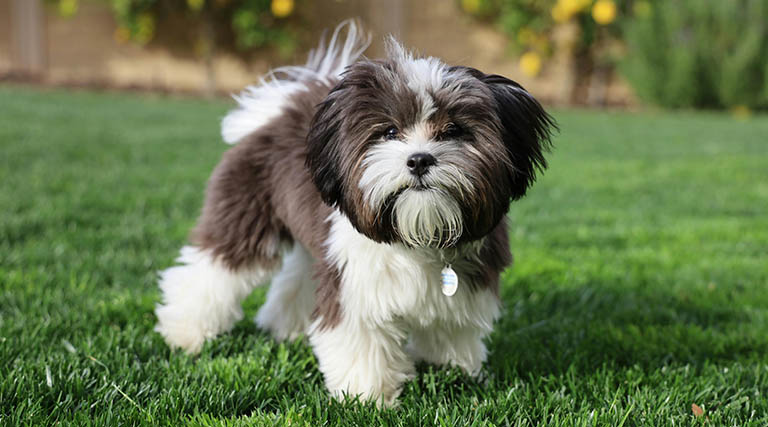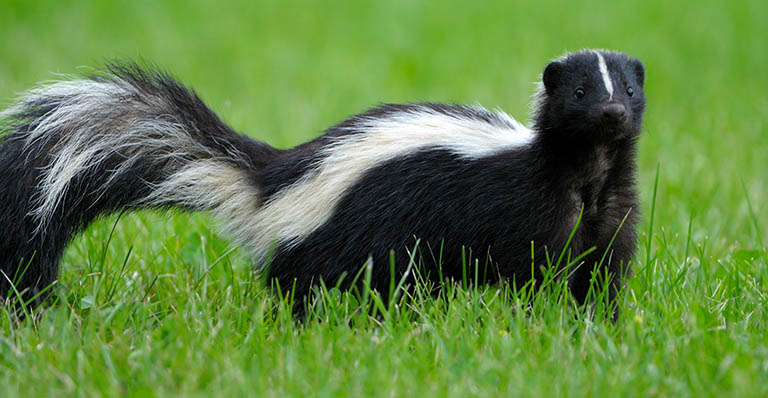Encounters with skunks can quickly turn into smelly and unpleasant situations for both you and your dog. Understanding skunk behavior, the composition of their spray and effective de-skunking techniques is important for dealing with such encounters.
We’ll explore in this blog everything you need to know about skunk spray, its effects on dogs, immediate actions to take when your dog gets skunked and how to effectively de-skunk your dog. We’ll also discuss preventive measures you can take to avoid future encounters with skunks and keep your dog safe and skunk-free.
Skunk Spray: What You Need to Know
Skunk spray is a liquid composed of organic compounds known as thiols and thioacetates, both rich in sulfur. This sulfur content is what gives skunk spray its infamous, gag-inducing odor, similar to that of rotten eggs. The spray is produced in two anal glands located under the skunk’s tail. These glands have nipple-like protrusions that allow the skunk to accurately aim and spray this yellow, oily substance. Remarkably, skunks can spray with precision up to 15 feet away.
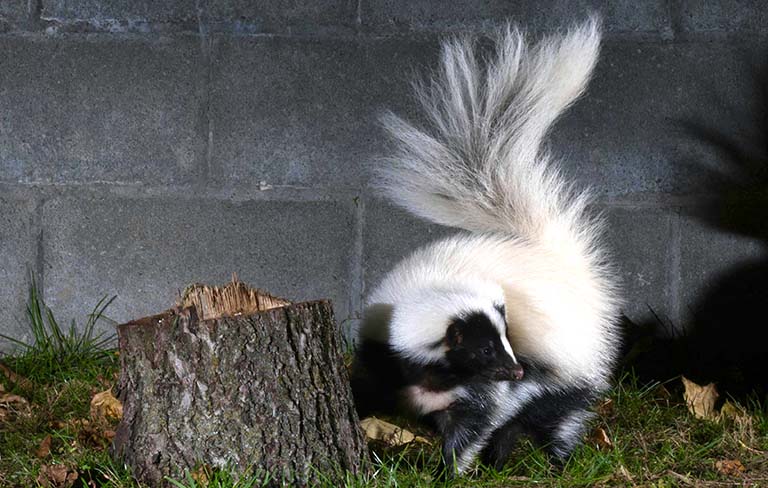
The Role of Thioacetates and Thiols
Skunk spray not only has an immediate and overwhelming odor but can also become more pungent over time due to the chemical nature of its components and can be reactivated when exposed to water. The primary culprits behind this lingering and sometimes intensifying smell are thioacetates and thiols.
Thioacetates: These compounds are initially less volatile and less odorous than thiols. However, thioacetates are unstable and can undergo a chemical reaction where they gradually convert into thiols.
Thiols: Known for their strong, sulfurous odor, thiols are the primary agents that make skunk spray so offensive. They are similar to the compounds responsible for the smell of rotten eggs and decomposing organic matter.
The Chemical Breakdown Process
Initial Spray: When a skunk first sprays, the mixture includes both thiols and thioacetates. The immediate smell is primarily due to the presence of thiols.
Conversion Over Time: Thioacetates are less smelly initially but start breaking down upon exposure to air, moisture, and the natural oils on your dog’s fur. This breakdown process converts thioacetates into additional thiols over time.
Intensifying Odor: As more thiols are released, the smell can seem to intensify even after the initial spray. This is why the odor of skunk spray can persist and even worsen if not treated promptly and effectively.
Purpose of Skunk Spray
Skunks primarily use their spray as a defense mechanism against predators. The potent odor is not only extremely unpleasant but can also cause temporary blindness and significant irritation in both animals and humans. When skunks feel threatened, they first try to warn potential aggressors before resorting to spraying. These warning behaviors include stomping their feet, scratching the ground, and hissing to scare off the perceived threat. Only if these warnings are ignored will a skunk resort to using its notorious spray.
Effects of Skunk Spray on Dogs
Skunk spray can cause severe irritation and burning, especially around the eyes and nose. If the mist is inhaled, it can also lead to temporary breathing issues. Dogs often react to the spray by rolling on the ground, pawing at their face, sneezing, vomiting and behaving as if they’ve been blinded. These reactions can be alarming, but most symptoms subside relatively quickly.
However, it’s important to closely monitor your dog for any prolonged or severe symptoms. In rare cases, the chemicals in the spray can cause more serious health issues, such as severe respiratory distress or chemical burns on the skin. If your dog shows signs of persistent discomfort, difficulty breathing or if their eyes remain irritated for an extended period, seeking veterinary attention is advised.
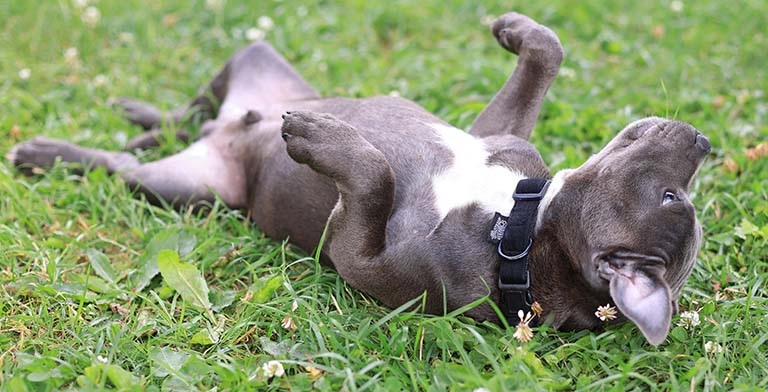
Immediate Actions
When your dog gets skunked, it’s important to stay calm and assess the situation. Keeping your dog outside is essential to prevent the potent smell from spreading indoors, which can linger and be difficult to eliminate. Avoid touching your dog with bare hands to prevent transferring the smell to yourself and other surfaces. Instead, use gloves or an old towel to handle your dog while you prepare for the de-skunking process.
Given the potential for the smell to worsen over time, it’s crucial to begin the de-skunking process as soon as possible. The longer the skunk spray remains on your dog, the more it can spread and intensify. Additionally, early action helps minimize your dog’s discomfort and reduces the risk of the smell transferring to furniture, carpets and other household items.
Preparing for De-Skunking
Before you begin the de-skunking process, gather all the necessary supplies to ensure you can work efficiently and effectively. Start by putting on old clothes that you don’t mind getting dirty, as the process can be messy. Wear gloves to protect your hands from the skunk smell and potential skin irritation. You’ll need a bucket for mixing the de-skunking solution, dog-safe shampoo for a final wash, and a towel to dry your dog afterward.
To make the de-skunking solution, you’ll need three common household ingredients: hydrogen peroxide, baking soda and liquid dish soap. This mixture creates a powerful solution that can break down the oily compounds in the skunk spray, neutralizing the odor.

Does Tomato Juice Work?
Contrary to popular belief, tomato juice does not effectively eliminate skunk odor. Tomato juice does not chemically react with the compounds in skunk spray to neutralize the smell. Instead, it merely has a strong scent of its own that can temporarily mask the skunk odor. However, this masking effect is minimal and often results in a combination of smells that resembles rotten eggs with a hint of tomato. Therefore, relying on tomato juice for de-skunking is not recommended, as it fails to address the underlying problem and offers only a brief and unsatisfactory respite from the odor. Beer and oatmeal also have this issue.
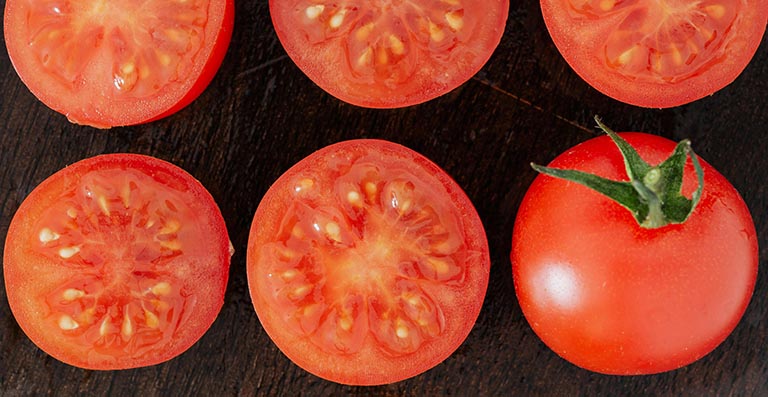
De-skunking Process
- Initial Rinse
- Rinse your dog with lukewarm water to remove some of the oil from the spray.
- De-skunking Solution Application
- In a bucket, mix the de-skunking solution: 1 quart hydrogen peroxide, 1/4 cup baking soda and 1-2 teaspoons of dish soap.
- Apply the solution carefully, avoiding the eyes, ears and mouth.
- Let it sit for 5-10 minutes.
- Rinse Thoroughly
- Rinse your dog thoroughly with lukewarm water.
- Repeat the process if necessary.
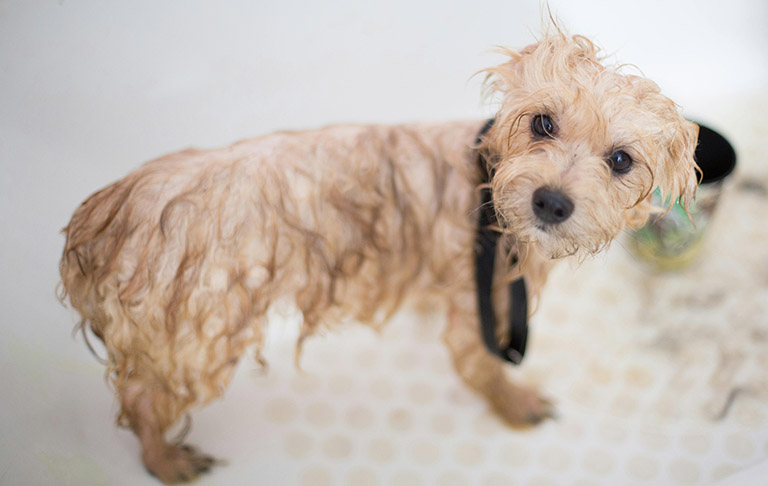
Preventing Future Encounters
Supervising Outdoor Activities
When it comes to keeping your dog safe from skunks, proactive supervision is key. Skunks are most active during dawn and dusk, so it’s important to stay vigilant during these peak times. Consider keeping your dog on a leash or within a fenced area when outdoors, particularly in areas where skunks are known to frequent.
Creating a Skunk-Proof Yard
Ensuring your yard is skunk-proof is essential for keeping these critters away from your property and your beloved dog. Start by maintaining a clean and tidy yard, removing any potential hiding spots for skunks such as brush piles or dense vegetation. Additionally, secure your garbage cans with tight-fitting lids to prevent skunks from scavenging for food and being attracted to your property. Another important step is to seal any gaps or openings in fences, sheds or decks to deter skunks from entering.

Utilizing Natural Repellents
Harnessing the power of nature can be an effective way to keep skunks at bay and protect your yard. Consider planting skunk-repelling plants, such as marigolds or lavender, which emit strong scents that can deter skunks from venturing too close. You can also spread natural deterrents like citrus peels, ammonia-soaked rags or mothballs around your yard to further discourage skunks from approaching.
Note: If you use ammonia-soaked rags or mothballs keep them far away from children.

Managing Skunk Encounters
Crossing paths with skunks can be memorable, albeit for unpleasant reasons. However, armed with the knowledge and techniques outlined in this blog, you can effectively manage skunk encounters and keep your dog safe and odor-free. Remember to stay calm and act swiftly when your dog gets skunked, and don’t forget to take preventive measures to minimize the risk of future encounters. By following these tips and strategies, you can navigate skunk encounters with confidence and ensure that you and your dog can enjoy the great outdoors without the lingering scent of skunk spray.
